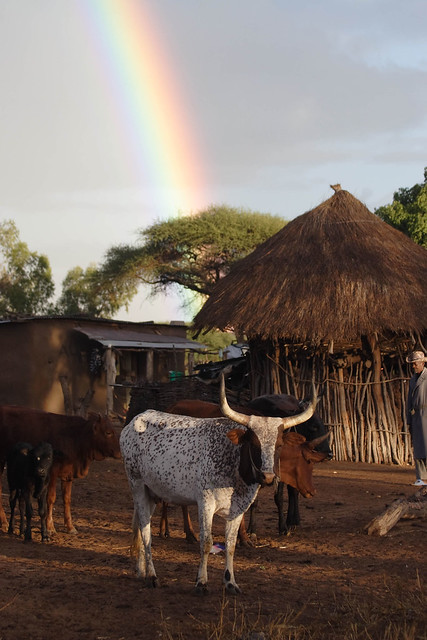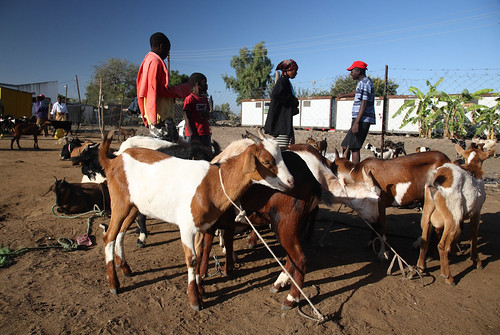Cows standing in the compound after grazing in Chokwe, Mozambique. A new study calls for improved integration between epidemiology and economics to understand economic and poverty impacts of animal diseases (photo credit: ILRI/Mann)
A new study by researchers working with the International Livestock Research Institute (ILRI) is recommending use of ‘bottom-up’ approaches that use the strengths offered by value chain analysis and information economics in assessing the impacts of animal diseases and their interaction with socio-economic and institutional factors in developing countries.
Authors Karl Rich, from the Norwegian Institute of International Affairs (NUPI) and on joint appointment with ILRI and Brian Perry, an honorary professor of veterinary medicine at the Universities of Edinburgh and Pretoria and formerly a leader of ILRI’s research team on animal health and food safety for trade, say economists and epidemiologists need to work more closely in assessing the impact of animal diseases. They recommend use of ‘participatory disease surveillance’ approaches that feature models of disease assessment that consider the context in which animal diseases occur and how they affect markets, livelihoods and poverty reduction especially in developing countries where livestock serve diverse commercial and cultural roles which affect disease control efforts.
In a paper ‘The economic and poverty impacts of animal diseases in developing countries: New roles, new demands for economics and epidemiology’ published in the 15 September 2010, online edition of the Preventative Veterinary Medicine journal, the scientists say both value chain analysis and information economics hold particular promise and relevance towards animal disease impact assessment.
They note that ‘normative’ approaches that try to guide how agents affected by diseases should behave (for example by emphasizing elimination of disease while relegating issues of disease mitigation, equity, gender and poverty) have had limited success in reducing poverty and disease prevalence in developing countries. The scientists suggest that new models that consider the context decision makers, farmers and value chain actors face in the event of animal disease outbreaks and what they actually do (not only what they should do) will contribute to more effective pro-poor policymaking.
The paper also recommends harmonizing divergent incentives among different stakeholders in developing countries noting that, for example, integrating the views of political economy and institutions engaged in animal health research will help to focus more broadly and systematically on incentives and the behaviour of those institutions and political actors, thereby helping researchers to better understand the economic impact of diseases.
The paper reviews the livelihoods and poverty impacts of animal diseases in the developing world, with a focus on Rift Valley fever, highly pathogenic avian influenza (HPAI) and foot and mouth disease. The paper also analyses the effects of these diseases through a poverty and value chains perspective and highlights ways that lessons from these perspectives can be aligned with disease control initiatives.
Rift Valley fever outbreaks are common in eastern Africa, especially after heavy rains, which lead to rises in numbers of mosquitoes that spread this viral zoonotic disease. Rift Valley fever affects cattle, sheep, goats and camels but also infects and kills humans. A recent outbreak of the disease between 2006 and 2007 killed more than 100 people in Kenya and led to significant loss of animals and livelihoods, especially for pastoralist livestock keepers.
Rich and Perry say the response of different stakeholders to diseases is based on their unique circumstances and constraints and their incentive for compliance also depends on such contexts. Their paper stresses the importance of ‘improved integration between epidemiology of disease and its relationships with economic behaviour.’
The authors call for a holistic look at the livestock sector as a system of interacting actors, each with their own values and constraints. They say that frameworks such as those offered by value chains can help identify the impacts that animal diseases generate. The value chain framework’s emphasis on relationships, characteristics and dynamics among actors, can help identify not only who is impacted by animal disease but also how and why they are affected and how different actors might behave and adjust in response to disease outbreaks.
To read the complete paper and its recommendation, click here
This piece is adapted from an original story posted on the Market Opportunities Digest blog written by Tezira Lore, communications specialist for ILRI’s Markets Theme.


 This
This 
